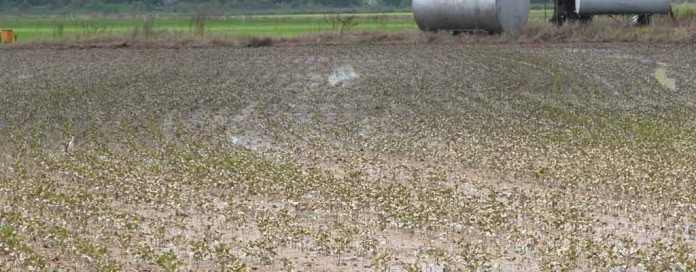COLUMBUS — Farmers who opt not to plant corn or soybeans this year because of consistently wet fields shouldn’t leave those fields bare, according to an expert at The Ohio State University.
A bare field is a vulnerable field, subject to losing its valuable, nutrient-rich layer of topsoil because wind can blow the topsoil away and rain can wash it away, said Sarah Noggle, an educator with Ohio State University Extension.
And a field without a crop is an open invitation for weeds to take over, making it harder to prevent weeds the next time a crop is planted there, Noggle said.
This spring, many Ohio farmers are having to consider what to do with fields where they normally would have planted corn or soybeans. The wettest yearlong period in Ohio on record has left regions across the state consistently saturated, delaying or preventing growers from being able to plant in them.
Up to one-third of Ohio’s acres that normally have soybeans or corn growing on them could be left unplanted, said Ben Brown, manager of Ohio State’s College of Food, Agricultural and Environmental Sciences’ Farm Management Program.
Much of the unplanted acres will be in northwest Ohio, the region of the state that has been the hardest hit by rain this spring.
“We want to plant. That’s what we do as farmers,” Brown said. “So it’s a ridiculously hard decision not to plant.”
Aid through Market Facilitation Program
If a farmer decides not to plant corn or soybeans this season, he or she will be ineligible to receive federal aid through the Market Facilitation Program (MFP). The program is aimed at helping offset farmers’ losses as a result of the recent overseas tariffs on U.S. goods, including corn and soybeans.
But farmers who plant a crop such as soybeans as a cover crop and don’t harvest it might still be able to collect a minimal MFP payment, Brown said. However, there’s a stipulation: The soybean cover crop has to be grown on land that had been intended to grow corn.
Plant a cover crop
Planting a cover crop such as oats, buckwheat, or cereal rye to have something on the field is a wise choice, she said. In addition to helping slow soil erosion, cover crops can improve soil health.
“Cover crops can be a good way to take advantage of an otherwise unfortunate situation,” Noggle said.
To help select a cover crop, visit go.osu.edu/covertheland.










